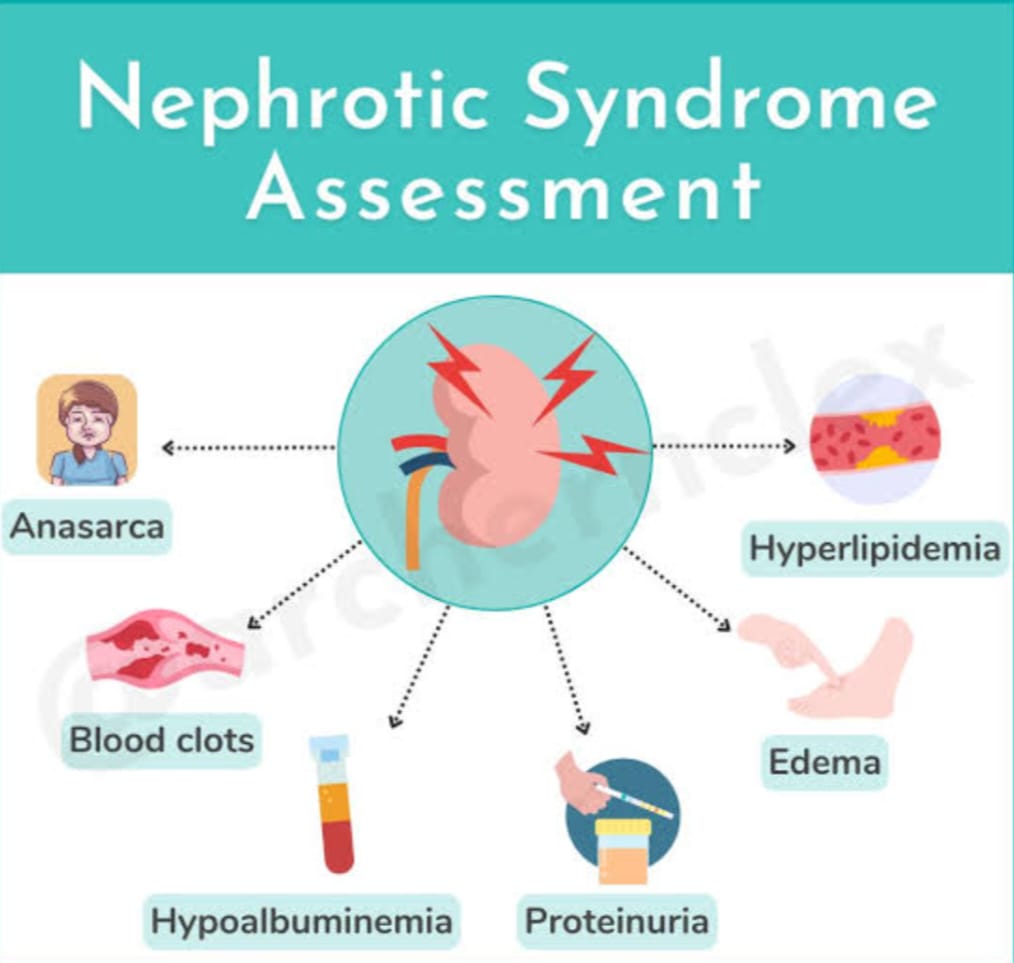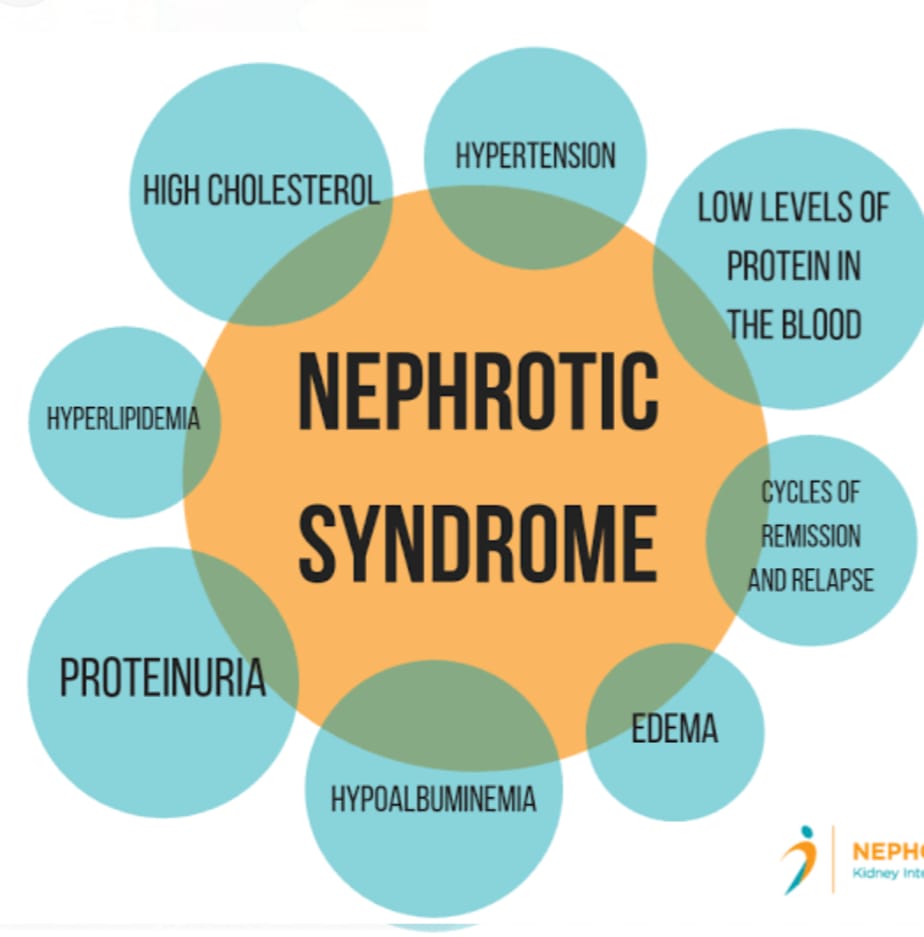Nephrotic Syndrome
Nephrotic syndrome is a nonspecific disorder in which the kidneys are damaged, causing them to leak large amounts of protein from blood and urine.
Classification
Nephrotic syndrome can be primary; being a disease specific to the kidneys or it can be secondary, being a renal manifestation of a systemic general illness. In all cases, injury to glomeruli is an essential feature.
Primary causes of nephrotic syndrome include, in approximate order of frequency:
- Minimal change nephropathy
- Focal glomerulosclerosis
- Membranous nephropathy
- Hereditary nephropathy
Secondary causes include, again in order of approximate frequency:
- Diabetes mellitus
- Lupus erythematosus
- Viral infections
The symptoms of nephrotic syndrome include:
- Foamy and frothy urine
- Unexplained weight loss
- General malaise
- Oedema, particularly around the abdomen, legs and eyes
- Muscle wasting
- Stomach pain
- Dizziness when standing up from a lying or sitting position (orthostatic hypotension).
Causes of nephrotic syndrome
Changes to the immune system – this type is most common in children. It is called ‘minimal change’ because the kidney filters appear normal under a microscope. The cause is thought to be changes in certain cells of the immune system. The function of the kidneys is normal and the outlook for recovery is usually excellent. Inflammation – local inflammation or swelling damages and scars the kidney filters. Examples of this are focal glomerulosclerosis and membranous nephropathy. Treatment may not resolve the condition and the kidneys may gradually lose their ability to filter wastes and excess water from the blood.
Secondary nephrotic syndrome – can be caused by certain conditions including diabetes, drugs, cancer and systemic lupus erythematosus (SLE).
Diagnosing nephrotic syndrome involves a number of tests, including:
-Urine tests – excessive protein makes the urine appear frothy and foamy. A dipstick urine test can also detect protein levels. A 24-hour urine collection or a spot urine protein/creatinine ratio may be done if urine protein is found on the dipstick. These tests measure the amount of protein more precisely and identify whether kidney damage is mild, moderate or heavy.
-Blood tests – to check the blood protein and creatinine levels.
-Biopsy – a small sample of kidney tissue is taken and examined in a laboratory.
-Ultrasound – an examination of the kidneys using sound waves to outline the structure of organs.
-Computed tomography (CT) scan or magnetic resonance imaging (MRI)
- Autoimmune markers
Homoeopathic projection: -
Homeopathic treatment for Nephrotic Syndrome has been found to be extremely effective.
- Homeopathic treatment aims at reducing
a. Frequency of attacks
b. Severity and duration of attacks
c. Cortisone dependency
- It regulating autoimmune processes
- It works by controlling the protein leakage, by correcting the glomerular function.
- Correcting the genetic tendencies
- It enhances immunity whereby the frequent infections reduce drastically and hence the attacks of Nephrotic Syndrome.
- Reducing the frequency of episodes of Nephrotic Syndrome
- Reducing the duration of subsequent episodes
- Reducing the severity of episodes
- Reducing the steroid dependency, whereby the patient should be able to manage with smaller dose of steroids in the early stages and eventually be able to reduce it and finally should be able to manage without steroids.



